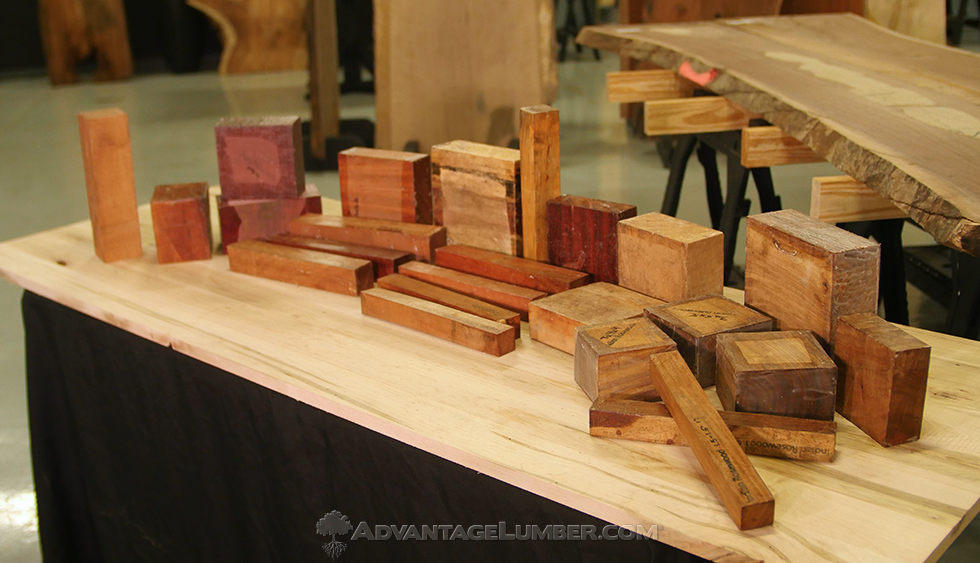- Scientific Name
- Acer saccharum
- Common Name(s)
- Hard maple, sugar maple, rock maple
- Distribution
- Northeastern North America
- Average Dried Weight
- 44.0 lbs/ft3 (705 kg/m3)
- Specific Gravity
- Basic: .56, 12% MC: .71
- Janka Hardness
- 1,450 lbf (6,450 N)
- Modulus of Rupture
- 15,800 lbf/in2(109.0 MPa)
- Elastic Modulus
- 1,830,000 lbf/in2(12.62 GPa)
- Crushing Strength
- 7,830 lbf/in2 (54.0 MPa)
- Shrinkage
- Radial: 4.8%, Tangential: 9.9%,
- Appearance
- Unlike most other hardwoods, the sapwood of hard maple lumber is most commonly used rather than its heartwood. Sapwood color ranges from nearly white, to an off-white cream color, sometimes with a reddish or golden hue. The heartwood tends to be a darker reddish brown. Birdseye maple is a figure found most commonly in hard maple, though it’s also found less frequently in other species. Hard maple can also be seen with curly or quilted grain patterns.
- Texture
- Grain is generally straight, but may be wavy. Has a fine, even texture.
- Rot Resistance
- Rated as non-durable to perishable, and susceptible to insect attack.
- Workability
- Fairly easy to work with both hand and machine tools, though slightly more difficult than soft maple due to hard maple’s higher density. Maple has a tendency to burn when being machined with high-speed cutters such as in a router. Turns, glues, and finishes well, though blotches can occur when staining, and a pre-conditioner, gel stain, or toner may be necessary to get an even color.
- Odor
- No characteristic odor.
- Allergies/Toxicity
- Hard maple, along with other maples in the Acer genus have been reported to cause skin irritation, runny nose, and asthma-like respiratory effects.
- Pricing/Availability
- Should be moderately priced, though slightly more expensive than soft maple. Also, figured pieces such as birdseye, curl, or quilt are likely to be much more expensive.
- Sustainability
- This wood species is not listed in the CITES Appendices or on the IUCN Red List of Threatened Species.
- Common Uses
- Flooring (from basketball courts and dance-floors to bowling alleys and residential), veneer, paper (pulpwood), musical instruments, cutting boards, butcher blocks, workbenches, baseball bats, and other turned objects and specialty wood items.
- Comments
- In tree form, hard maple is usually referred to as sugar maple, and is the tree most often tapped for maple syrup. (It’s also the state tree in four different states in the US.) Also called rock maple, its wood may be fairly considered as the king of the Acer genus. Its wood is stronger, stiffer, harder, and denser than all of the other species of maple commercially available in lumber form. Soft Maple is not a distinct species of maple, but rather a commercial term meant to differentiate the wood of some types of maple from hard maple (Acer saccharum).


